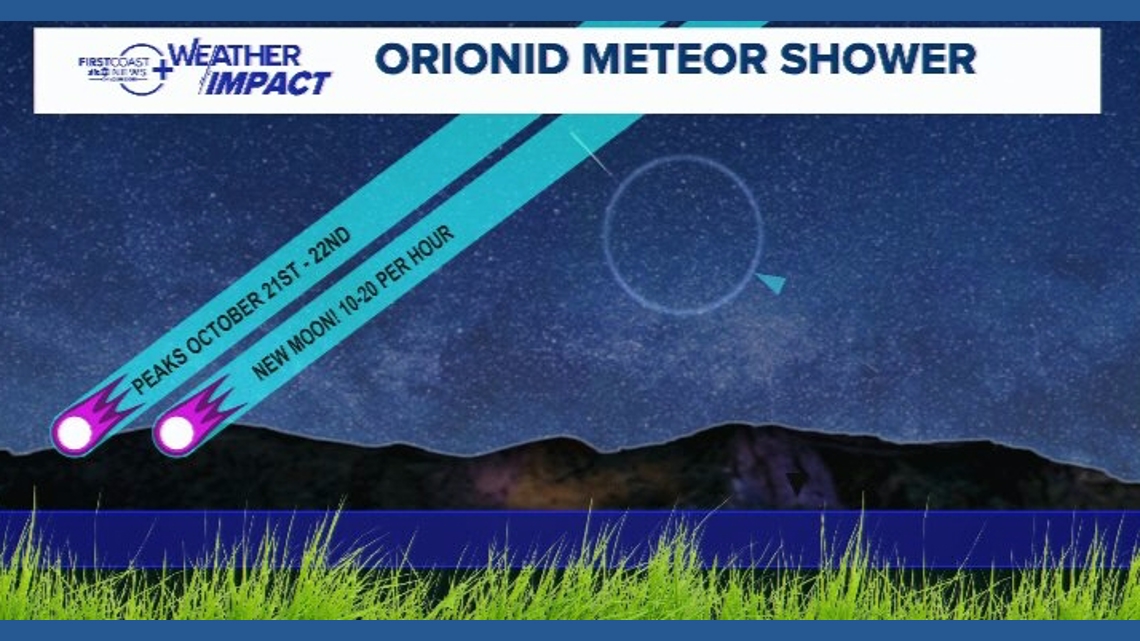The annual Orionid meteor shower will return on Oct. 21 and 22, which could offer a few opportunities to see some shooting stars. Here’s what to know.
JACKSONVILLE, Fla. — The annual Orionid meteor shower will return on the Oct. 21 and 22, which could offer a few opportunities to see some shooting stars.
This year’s event comes under new moon conditions, meaning skies will be especially dark — ideal for viewing faint meteors streaking across the sky. The Orionids are known for their fast, bright meteors, some leaving long-lasting trails that can glow for several seconds, and in rare cases, a few minutes.
The Orionid meteor shower originates from Halley’s Comet, one of the most well known comets. As Halley orbits the sun roughly every 75 years, it leaves behind a trail of dust and debris. Each October, Earth passes through this stream, and tiny bits of comet dust burn up in our atmosphere, creating the streaks we see as meteors.
Think of it like driving through a swarm of bugs on the highway — the Earth’s orbit plows through Halley’s debris field, and those particles “hit our windshield,” producing the shooting stars.
The best time to watch will be after midnight and before dawn, when the Orion constellation rises high in the sky. Orion is one of the easiest constellations to spot, known for its three bright “belt” stars lined in a row. The meteors appear to radiate from that area, but they can streak across any part of the sky.
Under dark, rural skies, viewers can expect to see around 10 to 20 meteors per hour, though those in brightly lit city areas will likely spot fewer.
For the best viewing experience, head to a location away from city lights, allow your eyes about 20 minutes to adjust to the dark and bring a blanket or reclining chair to take in the show comfortably.
This year on the First Coast skies will be clear as well. That along with the new moon should make for good viewing conditions.


